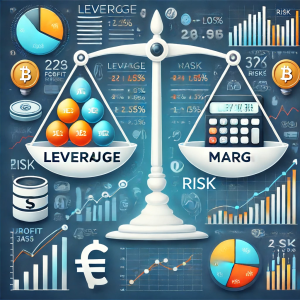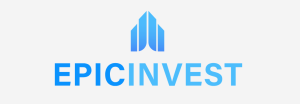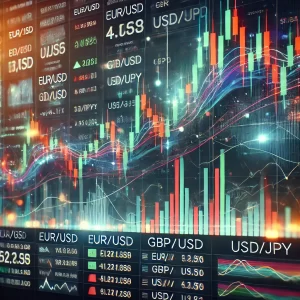Introduction
The global foreign exchange market, more commonly known as Forex or FX, is the largest and most liquid financial market in the world. With a daily trading volume exceeding $7.5 trillion, it offers countless opportunities for investors, traders, and even complete beginners to grow wealth, learn market dynamics, and understand how currencies interact. In this complete beginner’s guide, we’ll break down what Forex trading is, how to get started, and everything you need to know to succeed in 2025 and beyond.
Whether you’re just curious or looking to build a serious trading career, this guide will walk you through each concept — from basic terminology to executing your first trade, managing risks, and creating strategies that suit your goals.
What Is Forex Trading?
Forex trading involves exchanging one currency for another with the intention of making a profit from changes in exchange rates. These currency pairs are traded in the market 24 hours a day, five days a week.
The Forex market does not operate through a centralized exchange like stock markets. Instead, it’s an over-the-counter (OTC) market facilitated by banks, brokers, and financial institutions. This accessibility is one of the key reasons Forex trading is popular among individual traders and retail investors.
Major Currency Pairs
The most traded currencies in the world typically come in pairs such as:
- EUR/USD (Euro/US Dollar)
- USD/JPY (US Dollar/Japanese Yen)
- GBP/USD (British Pound/US Dollar)
- USD/CHF (US Dollar/Swiss Franc)
These major pairs offer the best liquidity and tightest spreads, making them ideal for beginners.
Understanding Forex Basics
Pips, Lots, and Leverage
Before diving into trading, it’s essential to understand a few fundamental concepts:
Pip: The smallest price movement in a currency pair, usually equal to 0.0001.
Lot: A standard unit size in Forex, typically 100,000 units of currency. Beginners often trade in mini (10,000) or micro lots (1,000).
Leverage: This allows traders to control large positions with small amounts of capital. For example, 100:1 leverage lets you control $10,000 with just $100.
While leverage increases potential profits, it also magnifies losses. Proper risk management is critical.
Bid and Ask Price
Bid: The price at which the market (or your broker) will buy a currency pair from you.
Ask: The price at which the market will sell a currency pair to you.
The spread is the difference between these two prices and represents the broker’s fee.
Step-By-Step Guide To Starting Forex Trading
Choose a Reputable Forex Broker
Your journey starts with selecting a broker that is:
- Regulated by recognized financial authorities (FCA, ASIC, CySEC, etc.)
- Offers a user-friendly trading platform (such as MetaTrader 4/5 or a web-based platform)
- Provides competitive spreads and reliable customer support
Look for demo accounts to practice without risking real money.
Open a Trading Account
Most brokers will ask for basic identification to comply with Know Your Customer (KYC) regulations. After verification, you’ll be able to deposit funds and access the platform.
Fund Your Account
Use bank transfers, credit cards, or digital wallets to fund your account. Start small. Many brokers allow accounts with as little as $100.
Learn to Use the Platform
Mastering your trading platform is essential. Watch video tutorials or explore demo accounts to get comfortable with:
- Placing orders (market, limit, stop-loss)
- Setting take-profit levels
- Using charting tools
- Monitoring open trades
- Platforms like MetaTrader 4/5 are industry-standard and beginner-friendly.
Technical And Fundamental Analysis
Technical Analysis
This involves studying price charts, indicators, and patterns to predict future price movements.Common tools include:
- Moving Averages
- Relative Strength Index (RSI)
- MACD (Moving Average Convergence Divergence)
- Support and Resistance Levels
Technical analysis helps identify trends, reversals, and entry/exit points.
Fundamental Analysis
Fundamental traders focus on economic news, interest rates, inflation data, and geopolitical events. Key sources include:
- Central bank announcements (Fed, ECB, BoE)
- Employment data (like Non-Farm Payrolls)
- GDP reports
- Consumer Price Index (CPI)
Successful traders often blend both approaches.
Risk Management Strategies
Forex trading carries inherent risk. Without a risk management plan, your capital could be wiped out quickly. Here are key principles:
Use Stop-Loss Orders
Set a predefined level where your trade will automatically close to limit losses. This is essential for every trade.
Don’t Overleverage
Avoid using the maximum leverage offered by brokers. Keep your risk per trade between 1-2% of your total capital.
Diversify Your Trades
Don’t put all your money into one currency pair or trading session. Spread your trades across different assets and times.
Forex Trading Strategies For Beginners
Trend Following Strategy
This involves identifying and following the direction of the market. If the market is making higher highs and higher lows, it’s an uptrend. Indicators like moving averages can help confirm trends.
Breakout Strategy
When a currency pair moves outside its defined support or resistance level, it often continues in that direction. Traders can capitalize by entering early during a breakout.
Swing Trading
Swing traders hold positions for several days, taking advantage of market “swings” within larger trends.
Scalping
A high-frequency strategy where traders make small profits off multiple quick trades. Requires deep knowledge, fast reflexes, and low spread brokers.
Building A Forex Trading Plan
Every successful trader operates with a plan. Here’s what it should include:
Clear goals: Know why you’re trading (income, wealth building, side hustle).
Strategy rules: When to enter and exit trades.
Risk parameters: Define your stop-loss, take-profit, and lot sizes.
Routine: Set time each day to analyze, trade, and review performance.
Stick to your plan, and don’t let emotions override your rules.
Psychology Of A Trader
Trading is as much a mental game as it is a technical one.
Discipline: Stick to your rules, even when tempted to chase losses or act on impulse.
Patience: Not every day is a good trading day. Wait for your setup.
Resilience: Losses are inevitable. Learn from them without emotional reaction.
Mastering your emotions and behavior will often separate winners from quitters.
Common Mistakes To Avoid
- Trading without a plan
- Risking too much capital per trade
- Overtrading
- Ignoring news and global events
- Jumping between strategies too quickly
- Letting emotions dictate trades
The best traders are methodical, data-driven, and consistent.
Best Practices For Success In 2025
The Forex landscape in 2025 has evolved with more access to tools, automation, and AI. To stay ahead:
Keep learning: Attend webinars, read books, join trading forums.
Backtest strategies: Use demo or simulation tools to see if your strategy works.
Review performance: Keep a trading journal to track wins, losses, and lessons.
Stay updated: Follow central banks, economic calendars, and geopolitical news.
Choosing The Right Forex Education
Platforms like ForexTraders, FOREX.com, and TechGuide offer free video tutorials, trading courses, and expert commentary. Learn the basics before committing capital. Start with:
- Introduction to Forex markets
- Risk management techniques
- Using indicators and platforms
- Live trade examples and case studies
Final Thoughts
Forex trading is an exciting journey — one filled with learning curves, personal growth, and opportunity. As a beginner, your focus should be on learning the fundamentals, practicing discipline, and protecting your capital.
Start small. Learn every day. And most importantly, approach trading with a professional mindset. With the right education, tools, and emotional control, you can build a successful Forex trading journey in 2025.



